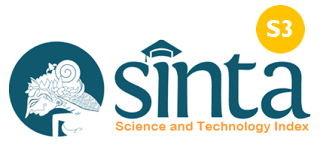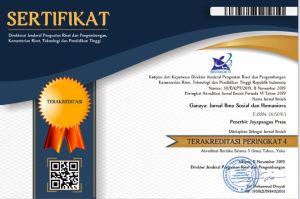Optimalisasi Penggunaan Teknologi Augmented Reality di Era Digital pada Sekolah Dasar
DOI:
https://doi.org/10.37329/cetta.v8i1.3844Keywords:
Strategy, Augmented Reality, Elementary SchoolAbstract
This study aims to analyze the strategy of optimizing the use of Augmented Reality (AR) technology in the digital era in elementary schools. Augmented Reality is a technology that unites the real world with the virtual world through smartphones, thus enabling a more interactive and immersive learning experience. Augmented Reality (AR) technology in education allows students to visualize the concept of learning materials that are difficult to understand. This research identifies the implementation of Augmented Reality technology in the learning process. The incorporation of virtual and real elements not only makes learning material more interesting, but also makes it easier for learners to understand and remember. The research methodology used is qualitative with data collection through observation, interviews and documentation. Data analysis uses the Miles and Huberman data analysis model. Fieldresult show that the implementation of ugmented Reality technology in the learning process helps visualize learning materials and makes learning more interesting, so that students are enthusiastic in the learning process. In the implementation of Augmented Reality technology, of course, there are obstacles that become obstacles to the learning process, the obstacles include lack of device storage, unstable internet networks, and limited encyclopedia books for scanning. To overcome these obstacles, strategies are needed to optimize the use of Augmented Reality technology, including teacher training, providing sufficient space on the device, network stability, ad adequate encyclopedias.
References
Andriani, A., Saputri, D. A., Hopipah, R., & Dewi, T. P. (2024). Pentingnya Media Pembelajaran untuk Meningkatkan Minat Belajar Siswa SDN 63/X Nibung Putih. Journal on Teacher Education, 5(3), 215-222.
Arrum, A. H., & Fuada, S. (2021). Penguatan Pembelajaran Daring di SDN Jakasampurna V Kota Bekasi, Jawa Barat Menggunakan Media Pembelajaran Interaktif Berbasis Augmented Reality (AR). ABDIMAS: Jurnal Pengabdian Masyarakat, 4(1), 502-510.
Budiman, I. A., Haryanti, Y. D., & Azzahrah, A. (2021). Pentingnya Media Aplikasi Android Menggunakan Ispring Suite 9 Pada Pembelajaran Daring Terhadap Motivasi Belajar Siswa. Prosiding Seminar Nasional Pendidikan, 3, 144-150.
Efendi, R., Yanti, A., & Agustin, R. (2024). Pendampingan dan Pelatihan Pembuatan Media Pembelajaran Augmented Reality bagi Guru Sekolah Luar Biasa Kabupaten Dharmasraya Untuk Meningkatkan Kompetensi Guru. Journal Of Human And Education (JAHE), 4(5), 367-378.
Faiz, A., & Kurniawaty, I. (2020). Konsep Merdeka Belajar Pendidikan Indonesia Dalam Perspektif Filsafat Progresivisme. Konstruktivisme: Jurnal Pendidikan Dan Pembelajaran, 12(2), 155-164.
Farid, M., Putri, M., Rahmah, R., Putra, M. J., & Nisa, M. (2024). Peran Teknologi Dalam Pembelajaran Kurikulum Merdeka Di Sdn 06 Belantik. Educatioanl Journal: General and Specific Research, 4(3), 557-567.
Fatimah, S., Prasetyo, S., & Munasti, E. (2024). Inovasi Dalam Pengajaran Ipa Di Sekolah Dasar Elalui Penggunaan Teknologi Digital, 5(2), 126-135.
Hakim, A. N., & Yulia, L. (2024). Dampak Teknologi Digital Terhadap Pendidikan Saat Ini. Jurnal Pendidikan Sosial dan Humaniora, 3(1), 145-163.
Harini, E. O., & Pujiriyanto, P. (2022). Analisis Manfaat Pengintegrasian Augmented Reality pada Bahan Ajar Pembelajaran Tingkat Sekolah Dasar. Jurnal Epistema, 3(2), 67-80.
Haryani, P., & Triyono, J. (2017). Augmented Reality (AR) Sebagai Teknologi Interaktif Dalam Pengenalan Benda Cagar Budaya Kepada Masyarakat. Simetris: Jurnal Teknik Mesin, Elektro Dan Ilmu Komputer, 8(2), 807-812.
Khoirina, A., & Adriyani, Z. (2024). Inovasi Pembelajaran Era Digital: Pengembangan Teknologi Augmented Reality di Sekolah Dasar. Didaktika: Jurnal Kependidikan, 13(001), 31-42.
Kurniawan, Y. I., & Kusuma, A. F. S. (2021). Aplikasi Augmented Reality untuk Pembelajaran Salat bagi Siswa Sekolah Dasar. Jurnal Teknologi Informasi dan Ilmu Komputer, 8(1), 7-14.
Kusumaningtyas, E. A., & Noviani, A. (2024). Analisis Desain Interaksi Augmented Reality Pada Buku Ensiklopedia Terhadap Konten Pembelajaran Anak Sekolah Dasar. Askara: Jurnal Seni dan Desain, 3(1), 1-19.
Kuswinardi, J. W., Rachman, A., Taswin, M. Z., Pitra, D. H., & Oktiawati, U. Y. (2023). Evektifitas Pemanfaatan Aplikasi Augmented Reality (AR) Dalam Pembelajaran Di Sma: Sebuah Tinjauan Sistematis. Jurnal Review Pendidikan dan Pengajaran, 6(3), 556-563.
Kusuma, S. D. Y. (2018). Perancangan Aplikasi Augmented Reality Pembelajaran Tata Surya dengan Menggunakan Marker Based Tracking. Jurnal Informatika Universitas Pamulang, 3(1), 33-38.
Latifah, A., Mulyani, A., & Aulia, F. N. (2022). Perancangan Alat Panca Indera Manusia untuk Media Pembelajaran Menggunakan Teknologi Augmented Reality untuk Jenjang Sekolah Dasar. Jurnal Algoritma, 19(2), 630-638.
Magdalena, I., Shodikoh, A. F., Pebrianti, A. R., Jannah, A. W., Susilawati, I., & Tangerang, U. M. (2021). Pentingnya Media Pembelajaran Untuk Meningkatkan Minat Belajar Siswa Sdn Meruya Selatan 06 Pagi. EDISI: Jurnal Edukasi dan Sains, 3(2), 312-325.
Magdalena, I., Fauzi, H. N., & Putri, R. (2020). Pentingnya Evaluasi Dalam Pembelajaran Dan Akibat Memanipulasinya. Bintang: Jurnal Pendidikan dan Sains, 2(2).
Manongga, A. (2022). Pentingnya Teknologi Informasi Dalam Mendukung Proses Belajar Mengajar Di Sekolah Dasar. Prosiding Seminar Nasional Pendidikan Dasar.
Mansori, M., Kristiono, N., Supriaji, U., Ismaya, R., & Jamin, N. S. (2024). Transformasi Pembelajaran Era Metaverse: Mengintegrasikan Teknologi Pembelajaran Imersif Dalam Pendidikan Modern. Innovative: Journal Of Social Science Research, 4(4), 11577-11586.
Mursyidah, D., & Saputra, E. R. (2022). Aplikasi Berbasis Augmented Reality sebagai Upaya Pengenalan Bangun Ruang bagi Siswa Sekolah Dasar. Jurnal Pendidikan Dasar: Jurnal Tunas Nusantara, 4(1), 427-433.
Ngongo, V. L., Hidayat, T., & Wiyanto, W. (2019). Pendidikan di Era Digital. Higher Education in the Digital Age, 628-638.
Nugraha, A. C., Bachmid, K. H., Rahmawati, K., Putri, N., Hasanah, A. R. N., & Rahmat, F. A. (2021). Rancang Bangun Media Pembelajaran Berbasis Augmented Reality Untuk Pembelajaran Tematik Kelas 5 Sekolah Dasar. Jurnal Edukasi Elektro, 5(2), 138-147.
Philosophy, E., Simarona, N., Elpin, A., Bahari, Y., & Tanjungpura, U. (2024). Analisis Penerapan Augmented Reality dalam Meningkatkan Efektifitas Pembelajaran Sains di Era Digital. ALACRITY: Journal of Education, 293-304.
Putra, D., Khafi, I., Shiddiq, A. J., Nugroho, B., & Dahlan, U. A. (2024). Integrasi Teknologi Immersive learning Dalam Pembelajaran Sekolah Dasar. Jurnal Riset Madrasah Ibtidaiyah, 4(2), 218-230.
Putri, N. M. F. E. (2021). Peran Guru Dalam Teknologi Dan Tantangan Perkembangan Teknologi Pendidikan Di Era Digital. Universitas Lambung Mangkurat Banjarmasin, 1-7.
Qorimah, E. N., & Sutama, S. (2022). Studi Literatur: Media Augmented Reality (AR) Terhadap Hasil Belajar Kognitif. Jurnal Basicedu, 6(2), 2055-2060.
Saputra, H. N. (2020). Augmented Reality dalam Pembelajaran. Idealmathedu: Indonesian Digital Journal of Mathematics and Education, 7(2), 92-97.
Sari, I. P., Dewi, M., Anggraini, R., Mahmudah, S. S., Mahmudah, & Rohmani. (2023). Studi Literatur: Efektivitas Media Pembelajaran Augmented Reality Berbasis Android pada Pembelajaran IPA di Sekolah Dasar. IJM: Indonesian Journal of Multidisciplinary, 1(5).
Sinesis, A. R., Firdaus, T., Mustofa, M. I., Puspita, I., & Chandra, A. (2022). Pelatihan Penggunaan Aplikasi Augmented Reality (AR) Untuk Meningkatkan Literasi Digital Guru di SMP Negeri 3 BP Peliung. Lumbung Inovasi: Jurnal Pengabdian kepada Masyarakat, 7(4), 698-703.
Sugiyono. (2024). Metode Penelitian Kuantitatif Kualitatif dan R&D. Bandung: Alfabeta.
Sweller, J. (2020). Cognitive Load Theory And Educational Technology. Educational Technology Research And Development, 68(1), 1-16.
Sadriani, A., Ahmad, M. R. S., & Arifin, I. (2023). Peran Guru Dalam Perkembangan Teknologi Pendidikan di Era Digital. Seminar Nasional Dies Natalis 62(1), 32-37).
Tari, E., & Hutapea, R. H. (2020). Peran Guru Dalam Pengembangan Peserta Didik Di era Digital. Kharisma: Jurnal Ilmiah Teologi, 1(1), 1-13.
Tria, R. I., Pramuswari, M. F., Santya, M., Oktariani, R., & Fatimah, S. (2023). Analisis Hasil Pengaruh Perkembangan Iptek Terhadap Hasil Belajar Siswa Sd/Mi. HYPOTHESIS: Multidisciplinary Journal Of Social Sciences, 2(1), 97-110.
Trismayanti, S. (2019). Strategi Guru dalam Meningkatkan Minat Belajar Peserta Didik di Sekolah Dasar. Al-Ishlah: Jurnal Pendidikan Islam, 17(2), 141-158.
Togatorop, F., Banjarnahor, D. N., & Saragih, D. Y. (2022). Sosialisasi Pengaruh Teknologi dalam Pendidikan di Era Globalisasi di Sekolah Dasar (SD) Swasta HKI 3 Pematangsiantar: Socialization of the Effect of Technology in Education in the Era of Globalization in Private Elementary Schools (SD) HKI 3 Pematangsiantar. Jurnal Pengabdian Masyarakat Indonesia, 1(2), 68-76.
Umri, B. K., Astuti, I. A., & Sholihan, A. C. (2023). Evaluasi Augmented Reality Bangun Ruang sebagai Media Pembelajaran Siswa Kelas IV Sekolah Dasar. Journal of Information System Management (JOISM), 5(1), 1-7.
Usmaedi, U., Fatmawati, P. Y., & Karisman, A. (2020). Pengembangan Media Pembelajaran Berbasis Teknologi Aplikasi Augmented Reality Dalam Meningkatkan Proses Pengajaran Siswa Sekolah Dasar. Jurnal Educatio FKIP UNMA, 6(2), 489-499.
Wahyudi, L. E., Mulyana, A., Dhiaz, A., Ghandari, D., Putra Dinata, Z., Fitoriq, M., & Hasyim, M. N. (2022). Mengukur Kualitas Pendidikan Di Indonesia. Ma’arif Journal of Education, Madrasah Innovation and Aswaja Studies, 1(1), 18-22.
Wardani, S. (2015). Pemanfaatan Teknologi Augmented Reality (Ar). Jurnal teknologi, 8(2), 104-111.
Downloads
Published
How to Cite
Issue
Section
License
Copyright (c) 2025 Yesinta Dewi Aprilia, Beti Istanti Suwandayani, Kuncahyono Kuncahyono

This work is licensed under a Creative Commons Attribution-ShareAlike 4.0 International License.
An author who publishes in the Cetta : Jurnal Ilmu Pendidikan agrees to the following terms:
- Author retains the copyright and grants the journal the right of first publication of the work simultaneously licensed under the Creative Commons Attribution-ShareAlike 4.0 License that allows others to share the work with an acknowledgement of the work's authorship and initial publication in this journal
- Author is able to enter into separate, additional contractual arrangements for the non-exclusive distribution of the journal's published version of the work (e.g., post it to an institutional repository or publish it in a book) with the acknowledgement of its initial publication in this journal.
- Author is permitted and encouraged to post his/her work online (e.g., in institutional repositories or on their website) prior to and during the submission process, as it can lead to productive exchanges, as well as earlier and greater citation of the published work (See The Effect of Open Access).
Read more about the Creative Commons Attribution-ShareAlike 4.0 Licence here: https://creativecommons.org/licenses/by-sa/4.0/.





